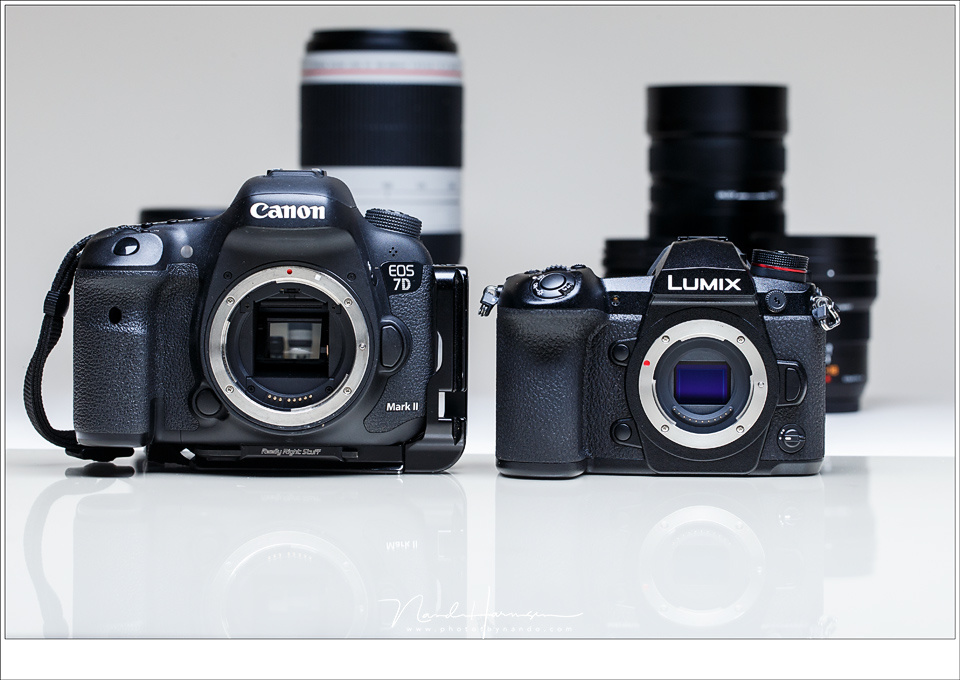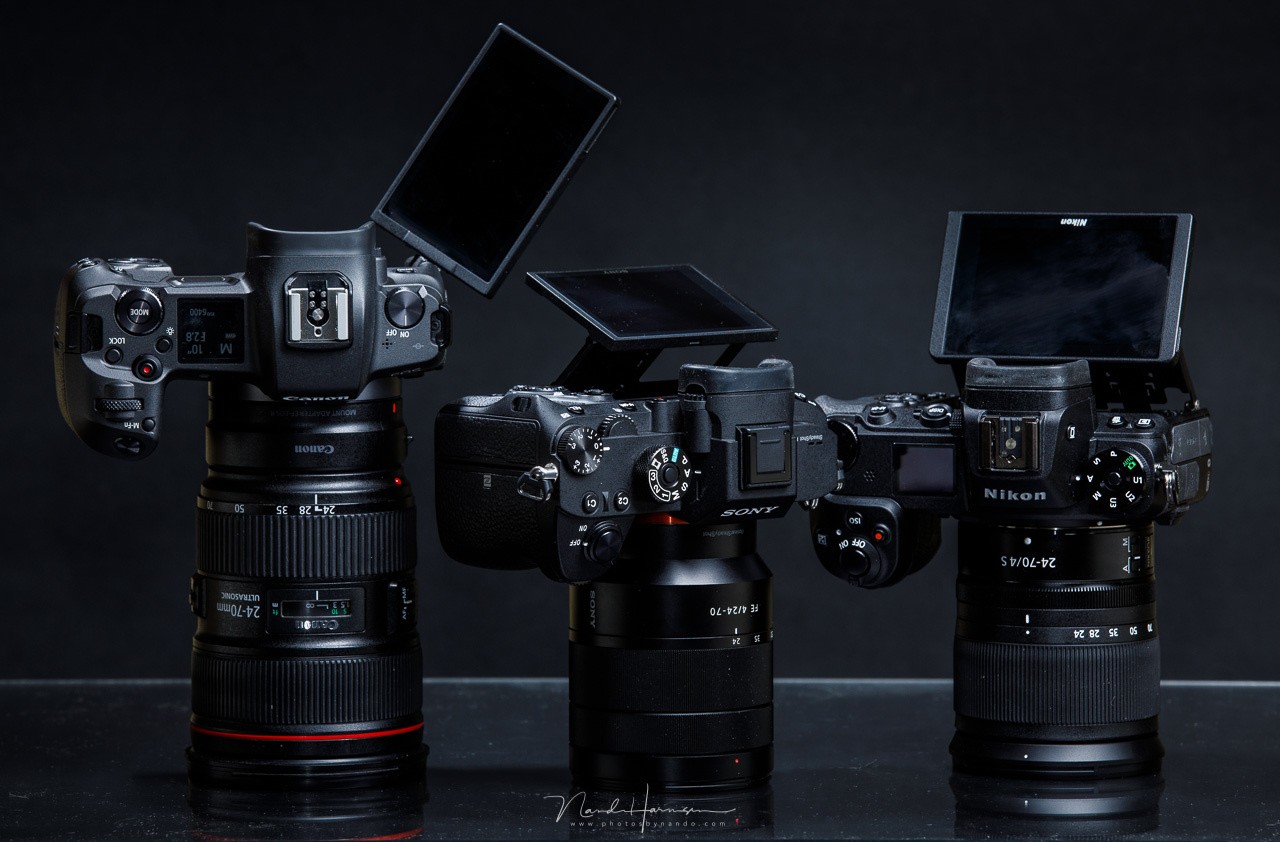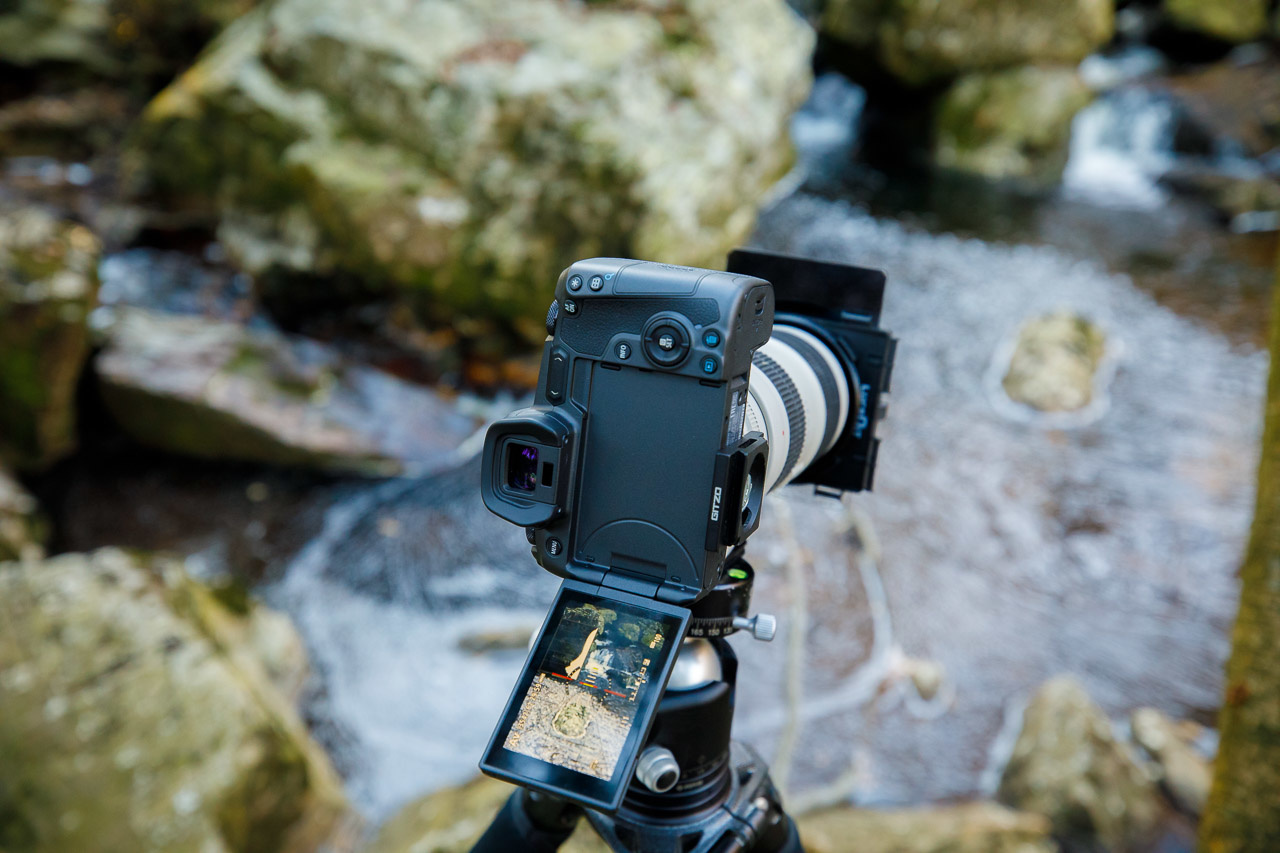The DSLR has been called a dinosaur on the brink of extinction. It has been called old-fashioned, or even outdated technology. It is all because of the mirrorless cameras that hit the market a few years ago now. Let’s have a look at the differences between the two and find out if both systems can live next to each other.
Technology is making huge leaps. It is all because of the chips that are getting smaller, faster, and more energy efficient. It is making things possible that would have sounded as science fiction in the old original Star Trek series. Technology has made our cameras advanced computers capable of amazing things.
We got a screen on the back of our camera to view the photo we took a second before. It is possible to judge the result and change settings if needed to acquire a perfect photo. Although the consumer compact cameras already used these screens as a sort of viewfinder, the traditional DSLR camera kept using a mirror and pentaprism to see the image as projected by the lens. It was no surprise to eventually see a small screen appear inside the viewfinder, making the mirror and pentaprism no longer necessary. The modern mirrorless camera was born.

The modern Nikon Z 7 mirrorless camera. It is not large, not small, not heavy weighted and not light weighted either. It is near perfect. But is it better than its DSLR sisters and brothers?
We are at a moment where the mirrorless system has reached maturity, I think. Electronic view finders are almost as good as the real thing, and will probably getting even better in the next years. Cameras can be smaller and lighter because there is no longer a mirror and pentaprism inside. It does not make the photography equipment smaller, though, because the sensor sizes still require the same large lenses.
Now we have reached the point where there are two different types of camera. We have the traditional digital single lens reflex camera, the DSLR, and the new interchangeable lens mirrorless cameras. Both have the possibility to change lenses, use flash guns, and share all the same benefits. The only difference is having a mirror and pentaprism, or not.
Or is it? Lets have a look to a few differences.
1. A Mirrorless Camera Can Be Much Smaller Than a DSLR

The Panasonic DC-S1 mirrorless camera is a very large and heavy full frame camera. It resembles a DSLR, although it has no mirror inside.
Although it does not applies to all mirrorless cameras, it is possible to make a mirrorless camera very small. The mirror and pentaprism take up a lot of space. Removing it allows the body to be much smaller, and lighter. The absence of a mirror make it also possible to place the lens closer to the sensor.
Although the camera body does not need the traditional DSLR look, many mirrorless cameras resemble the design of a DSLR. While some manufacturers miniaturize the mirrorless, making it as small as possible, some keep the size relatively large, resembling the full size DSLR. I find the extremely small camera bodies not that comfortable, but opinions differ.
2. A Mirrorless Camera Is Not Necessarily Less Complex

A small micro 4/3 mirrorless camera from Panasonic next to a Canon DSLR. Although the sensor size is a bit smaller, it shows how small a mirrorless camera can be. There are also mirrorless cameras with a full frame sensor that resemble the size of the Panasonic Lumix
Even with the absence of a complex mirror, a mirrorless camera is not necessary less complex. The complexity is just very different. Indeed, a mirrorless has fewer moving components, which probably is much easier to build. But the complexity is more software related. The sensor is used constantly and not only has to register the light when a photo is taken, it also is used for focusing and measuring exposure.
Also the electronic viewfinder needs to have very high refresh rates to imitate a optical viewfinder as much as possible. And the image on the screen needs to amplify enough for it to be able to see in dark environments.
3. A Dedicated Autofocus Sensor inside the DSLR

Two high speed cameras next to each other. Both are for action photography and perform very well.
Every DSLR has a dedicated autofocus sensor hidden underneath the mirror. This dedicated sensor makes it possible to optimize it for just one purpose. The autofocus can be made very fast, responsive, and flexible. It is perfect for fast action and tracking objects and DSLR still outperform the mirrorless autofocus systems at this time.
Nevertheless, the mirrorless autofocus systems have other benefits. It is much easier to use the complete sensor for measuring focus distance. It also is possible to recognize faces or even eyes. For this, some mirrorless camera performances are amazing and perhaps better than the DSLR systems. I am sure the next few years mirrorless technologies will advance to match action and tracking objects like a DSLR.
4. Electronic Viewfinder Shortcomings

A mirrorless camera lacks a optical viewfinder. You might have the WYSIWYG experience, but the optical viewfinder has its benefits.
The absence of a mirror and pentaprism makes it necessary to use a digital screen for a viewfinder. The pixel density of these small screens have to be very high to have a good resolution. These screens are becoming better by the year and almost resemble the details you can have with an optical viewfinder.
Refresh rate can be a problem of electronic viewfinders. Especially with fast moving objects, and tracking objects, the refresh rate may be not enough to imitate a real optical system. Also modern LED lights may flicker a lot when these are working with almost the same frequency.
I have found the electronic viewfinders being less usable with night photography. Looking through the viewfinder make you lose your night sight in dark environments because the screens always emit light. Depending on the camera it may also be difficult to generate a usable viewing image on the screen.
5. A Mirrorless Camera Always Has To Be Activated

You cannot look through the viewfinder of a mirrorless camera without switching on the camera.
When using a DSLR you can always look through the camera to see the things you want to photograph. You may just want to look for a composition, or use it in another way. For this, you don’t have to switch on the camera.
With a mirrorless camera you always need to switch on the camera, even if you just want to take a look at a possible composition. Over the years I personally have found this to be one of bigger disadvantages, although you will get used to it. If I had a choice, I rather have an optical viewfinder.
Which is Better?
These are just five obvious differences between a DSLR and a mirrorless camera. But regardless of the differences, both types of cameras are very capable machines, each having their own strengths and weaknesses. I believe it is foolish to bash one system over the other because in the right hands both systems produce the same qualitative photo. In other words, both have a right of existence, and can live next to each other without a problem.

The Canon EOS 5D mark IV DSLR next to the Leica SL mirrorless camera.
I have photographed extensively with both DSLR and mirrorless cameras. I used Sony, Nikon, Canon, Panasonic, Fujifilm, Leica, and Hasselblad. I have seen the differences, similarities, and experienced how both DSLR and mirrorless cameras perform in real life situations. Based on my experience I can advise everyone to use the system you like the most without worrying about the other camera system. Never forget, the camera is just the tool. Nothing else.
What kind of camera system do you use? It is mirrorless or DSLR, and it there a reason why you are using that camera system at this moment? Please leave your answer in the comments below.







Both has its place. DSLR will not die, but will go out of favor for many photographers.
Fuji (lacks full frame) could do something revolutionary and have a runaway hit. They could release 35mm film cameras (at least 3), with few generally used lenses. It could be 100% mechanical with many unique features for today's age and it will sell like hot cakes (who wouldn't get a well supported film camera). Maybe they should. I'd definitely buy 2.
I remember an article where Fujifilm explained they won't go full frame. I cannot remember why
Well, full frame film camera is better option
It will be very expensive since they don't have any FF lenses and there is a ton of competition on full frame
Yep, that's why they should go film
I once was thinking about film, and if I had the money and time I would go big format. Really big. ;)
Yeah, I am conteplating Hasselblad 501c with the 90mm lens. Tempted, but so far I am resisting well. I enjoy shooting with GFX-50s and I would love to jump something big.
I don't find the medium format big. Only bigger
No, something like 4x5" large format :D
Of course, large format is even bigger. But I think I'd stop with medium format big where I can develop negatives using labs around the place I live.
But yeah, large format is the biggest.
"With a mirrorless camera you always need to switch on the camera, even if you just want to take a look at a possible composition. Over the years I personally have found this to be one of bigger disadvantages, although you will get used to it"
I have been using Sony for a few years now and really have run into the problem of having the lens cap on more than waiting for the camera to start LoL. If it is "asleep" as soon as I touch the camera i touch the shutter button and by the time it is up to my eye it is ready to go. It does take a little time from a cold start but not what I'd call a very big disadvantage.
My main gripe with the EVF is when shooting in a darker studio and I need to amplify the brightness of the image to see things, which is sometimes better than an OVF when you can hardly see anything,
Other than that I have no romantic attachment to the OVF, but I am older now and enjoy the 5x and 10x zoom in to check focus both when shooting and playback.
I really do not understand the friction between the two systems. I've used both DSLRs and mirrorless for a long time and i like them. They have advantages over each other, certainly. However, just use it. In either case the image starts in your brain.
Sometimes it seems people feel offensive if you say DSLR is not dead or mirrorless is not perfect
lol
> a mirrorless has fewer moving components, which probably is much easier to build. But the complexity is more software related. The sensor is used constantly and not only has to register the light when a photo is taken, it also is used for focusing and measuring exposure.
FFS... A DSLR has a separate sensor for focus and exposure, yes. BUT IT STILL NEEDS SOFTWARE TO RUN THAT SENSOR! In fact it needs more software than the mirrorless - because it has to run in DSLR mode and as an effective mirrorless as well, for live view and video. Plus lens focus control is more complex when you're using separate sensors for imaging and focusing because of alignment issues. The software for a mirrorless is simpler than that for a performance DSLR with live view, not more complex.
The ignoramus who wrote this article also didn't address the biggest reason why DSLRs are likely to disappear in the end: digital sensors benefit hugely from lenses that produce light rays perpendicular to the sensor and therefore parallel to its microlenses. It's much easier to produce lenses that perform this way if you can get the rear element close to the sensor. You can't in a DSLR because of the mirror.
And it's just bizarre that he doesn't mention video at all. Presumably he doesn't shoot any, but you'd think that even someone as technically ignorant as this would be aware that a lot of other people do...
I am a photographer, not a video person. Can't be both. ;)
But don't get angry with me for writing down my opinion on this topic. Just as you are entitled to have an opinion about it.
I would not have bothered replying to someone that is so rude and disrespectful. The sort of person that is best ignored.
hahaha. Perhaps you're right
Hahaha. That’s hilarious. now we think all of a sudden dslr is not the old technology that’s is bound to die because of perhaps canon and Nikon released dslrs this past month.
They won’t do that again. They can’t, they hit the upper limit with their existing technology.
Give them a little time, they are trying to switch things over.
Dslr won’t make it to future.
Manufacturers can make it die, but it does not mean that it has to. There is really nothing wrong with Dslr.
You sound if you will be happy if DSLR died. Did DSLR cameras hurt you in some way?
;)
For now DSLRs are a nice economic choice. There are tons of second hand and refurbished cameras and lenses. You can buy a nice used Nikon D750 for half the price of a new Z6.
Yes, but used mirrorless can be a nice deal too. The original EOS M is super cheap, has Canon colour science, and can use virtually any old manual focus lens. You can even put a speed booster on and make it effectively full frame.
(That said, I just bought a 5Dii because they're nice cameras for raw video with Magic Lantern.)
An off-the-wall question for you - if you had neither and wanted a camera body primarily for scanning high megapixel negatives, which would you choose, and why??
I think for scanning I might look at a Sigma with a Foveon sensor - foveon images are almost impossible to tell from film if the exposure is right. Let me google..
https://www.dpreview.com/forums/post/59255415
Otherwise, I really don't think this is an application where DSLR vs mirrorless applies much. What might matter, as that guy suggests, is ease of HDR for dynamic range.
(Interesting question!)
Complete bollocks. I have used film since 1965, and a wide variety of digital cameras since the 1990s, including the SD1 and the DP and DP Merrills. Foveon images have some similarities to film images, but if you can't tell them apart there something wrong with your eyes or your judgement.
And for scanning I'd get a film/slide scanner.
I don't know if this would make difference in your set up but the MLC has less moving parts so no vibration. Lots of MP and good dynamic range, you may want to look at Sony. The Foveon is an odd critter, the people who know them really like them but they are sort of under the radar. A friend is a super fan of them but I don't really get it, maybe I just don't know enough.
A cheap old a7r2. Still one of the best sensors money can buy, sharp lenses and you don't need anything else for scanning negatives.
Yes, that was my thought too - the best sensor you can get for as little money as possible (though still a fair chunk) on a camera that has been superceded but with features I don't need, live view focusing with a manual macro lens or extension tube
I don't know what I would choose for scanning negatives. I should delve into that question if I had to make a choice.
I shoot a lot of stuff in near darkness. When mirrorless cameras matches the focussing ability of my D5 I'll have another look.
The lact outdoor wedding party we took a mirrorless camera too showed us the huge flaw they have. I was fighting the camera to get a focused shot, and to get a focus point. On top of that the camera itself is distracting
How is the camera distracting. Could you explain?